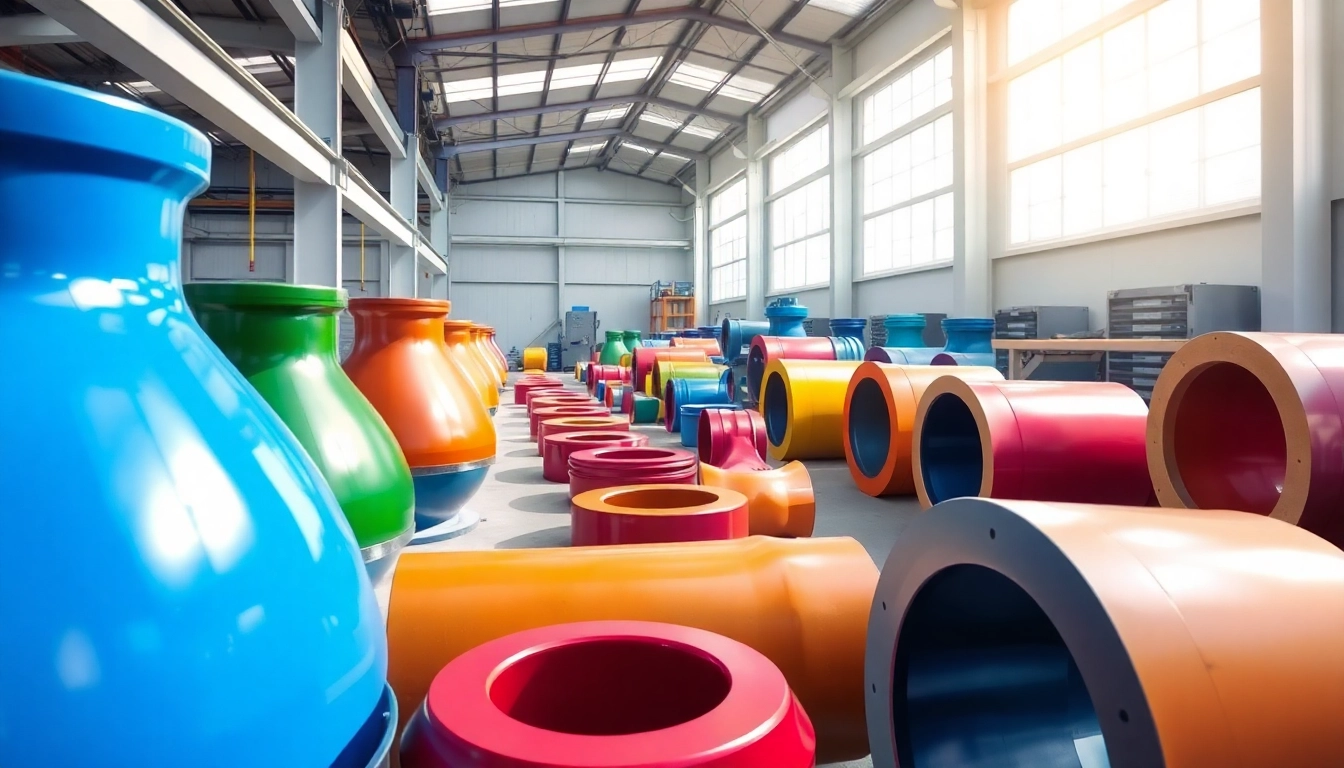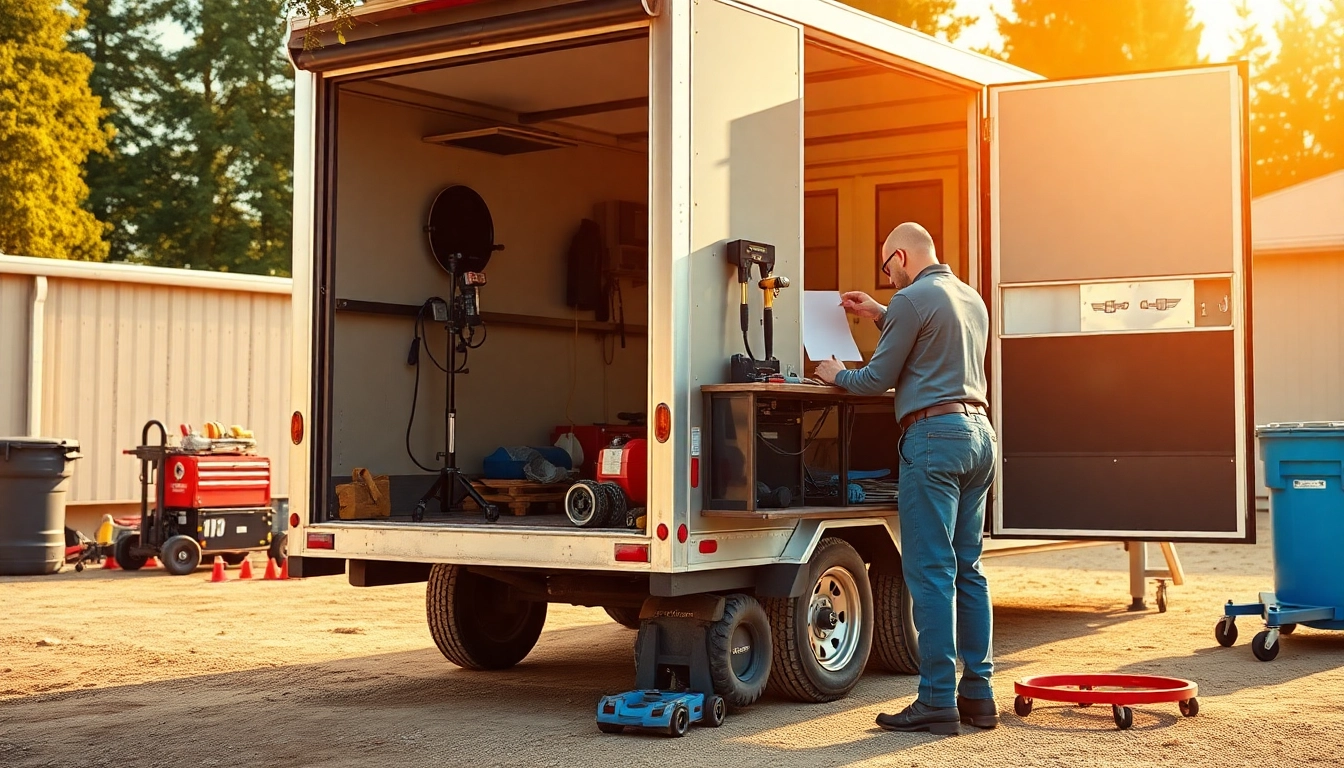Understanding Blow Molding Technology
What is Blow Molding?
Blow molding is a sophisticated manufacturing process used to create hollow plastic parts. The essence of this technique lies in the use of compressed air to expand a molten plastic material into the shape of a mold. Commonly applied in the production of containers, bottles, and various hollow parts, blow molding is essential across numerous industries, particularly in packaging and automotive sectors. This process is characterized by its efficiency and precision, making it a preferred choice among manufacturers seeking to optimize production lines.
Types of Blow Molding Processes
There are three primary types of blow molding processes, each with its unique characteristics and applications:
- Extrusion Blow Molding (EBM): This process involves extruding a molten tube of plastic (parison) and then inflating it using air. It is commonly used for producing larger items, such as containers and tanks.
- Injection Blow Molding (IBM): In this method, the plastic is first injected into a mold to create a preliminary shape, which is then inflated in a separate mold. This process is ideal for higher precision products, usually smaller items like bottles.
- Stretch Blow Molding (SBM): This advanced technique stretches the plastic before it is inflated, resulting in stronger, more durable products. Typically used for PET bottles, SBM enhances clarity and strength, making it a favored choice in the beverage industry.
Applications of Blow Molding in Various Industries
Blow molding technology plays a crucial role in several industries due to its versatility:
- Consumer Packaging: PET bottles, containers for personal care products, and household items.
- Automotive: Components like fuel tanks, air ducts, and interior parts.
- Medical: Bottles for pharmaceuticals and medical containers.
- Industrial: Tanks, containers, and specialized parts for machinery.
Understanding these applications helps manufacturers tailor their production techniques and materials according to industry-specific needs.
Choosing the Right Blow Molding Machine Manufacturer
Factors to Consider When Selecting a Manufacturer
When looking for a blow molding machine manufacturer, several factors should be taken into account to ensure you partner with the right company. These include:
- Experience and Reputation: A manufacturer with a long-standing history in the industry often has proven technologies and customer satisfaction.
- Innovation: The right manufacturer should offer state-of-the-art technology and the latest features in blow molding to adapt to evolving market needs.
- Customization Capabilities: Every business has unique requirements; thus, working with a manufacturer that can provide customized solutions is essential.
Examining Manufacturer Credentials and Expertise
Before choosing a blow molding machine manufacturer, it’s crucial to review their credentials. Look for:
- Certifications: Compliance with international quality standards such as ISO 9001 can indicate operational excellence.
- Technical Expertise: Evaluate the qualifications of the engineering team and support staff to determine their capacity to assist with complex solutions.
- Industry Standing: Review testimonials and case studies from previous clients to gauge satisfaction and product reliability.
Evaluating Customer Support and After-Sales Service
Effective customer support and after-sales service can significantly impact your operational success post-purchase. Key considerations include:
- Availability: Ensure that the manufacturer offers ongoing technical support and access to spare parts.
- Training and Education: Effective training programs for your team can help minimize downtime and enhance machine utilization.
- Warranty and Service Agreements: Understanding the manufacturer’s warranty policy and accompanying service agreements can prevent unforeseen costs in the long run.
Key Features of Modern Blow Molding Machines
Efficiency and Production Speed
Modern blow molding machines are designed with efficiency at their core. Advances in mechanical design and software optimization have resulted in enhanced production speeds, allowing manufacturers to meet high demand without sacrificing quality. Features such as quick mold change capabilities and intelligent automation help streamline operations, reducing production times significantly.
Technological Advancements in Blow Molding
Technological innovations have transformed the blow molding landscape. Key developments include:
- Energy Efficiency: New machines are designed to consume less energy through better insulation and optimized heating patterns.
- Smart Technology: Incorporation of IoT and AI technologies for real-time monitoring and predictive maintenance ensures smoother operations.
- Advanced Materials: New materials allow for lighter yet stronger products, expanding the range of applications for blow-molded items.
Sustainability and Eco-Friendly Practices
In response to growing environmental concerns, many modern blow molding manufacturers are prioritizing sustainability. Strategies include:
- Recyclable Materials: Using plastics that are easier to recycle contributes to a lower carbon footprint.
- Waste Reduction: Streamlined production processes aim to minimize waste generation.
- Eco-Friendly Energy Sources: Many manufacturers are transitioning to alternative energy sources to power their machines.
Cost Implications of Investing in Blow Molding Equipment
Initial Investment vs. Long-term Savings
Investing in blow molding machines often requires significant upfront costs; however, the long-term savings can offset these initial investments. Factors such as reduced labor costs, lower material wastage, and enhanced production efficiency contribute to overall savings. As manufacturers scale and increase production volumes, these savings become even more pronounced.
Analyzing Total Cost of Ownership
Total cost of ownership (TCO) encompasses not only the purchase price of the blow molding machine but also operating costs, maintenance, and training expenses. When evaluating potential machines, manufacturers should consider:
- Maintenance Costs: Predictive maintenance capabilities can reduce downtime and extend the life of the equipment.
- Energy Consumption: Machines engineered for reduced energy use contribute to decreased operational costs.
- Resale Value: Considering market demand for used equipment can inform investment decisions regarding new machinery.
Future-Proofing with Modern Blow Molding Machines
Investing in cutting-edge blow molding machinery is crucial for future-proofing operations. As consumer demand evolves and regulatory standards become more stringent, adaptable machines equipped with the latest technology can help maintain competitiveness. For instance, machines capable of handling multiple types of resins or configurations enable manufacturers to pivot effectively toward changing market desires.
Case Studies of Successful Blow Molding Projects
Industry Leaders and Their Innovations
Numerous companies have successfully embraced blow molding technology to improve production efficiency and product quality. Industry leaders often utilize innovative strategies to set themselves apart:
- Uniloy: A pioneer in blow molding technology, Uniloy integrates four different molding technologies, allowing for versatile manufacturing solutions across a broad spectrum of industries.
- Wilmington Machinery: Known for high-speed rotary extrusion machines, this company has led the way in developing faster production capabilities for containers with advanced materials.
- Jomar Corporation: Celebrating decades in the injection blow molding sector, Jomar has focused on precision manufacturing for medical applications, showcasing their adaptability in a demanding market.
Lessons Learned: Real-World Applications
Analyzing implemented projects gives valuable insights into the practical challenges and adaptive strategies employed by manufacturers. Key lessons often include:
- Embracing Change: The need for continuous learning and adaptation to new technologies is paramount for sustained success.
- Collaboration: Engaging with suppliers and partners can foster innovation and provide solutions to unique manufacturing challenges.
- Focus on Sustainability: Incorporating eco-friendly practices not only supports corporate responsibility goals but also resonates with consumers and enhances brand image.
Future Trends in Blow Molding Technology
The future of blow molding technology appears promising as trends towards automation, eco-friendliness, and advanced materials continue to shape the industry landscape. Upcoming trends to watch include:
- Increased Automation: Robotics and AI-driven machines are likely to become standard, minimizing human error and optimizing production lines.
- Circular Economy Practices: More manufacturers are expected to adopt principles that promote recycling and sustainable materials management.
- Greater Customization: As demand for bespoke products rises, blow molding processes are likely to evolve to accommodate varied consumer preferences.
For businesses seeking a Blow Molding Machine Manufacturer that reflects these advancements, thorough research combined with an understanding of current market dynamics is essential.



